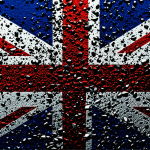The Role of Thermal Imaging in Fire Safety Enhancement
Within the realm of fire safety improvement, thermal imaging technology is a game-changer. This innovative approach allows for detecting heat variations that aren’t visible to the naked eye. By identifying temperature discrepancies, thermal imaging can pinpoint areas that may pose significant fire hazards.
Traditional fire safety methods often rely on smoke detection or manual inspection, which may not always be effective in early fire detection. In comparison, integrating thermal imaging technology offers distinct advantages, such as its ability to detect hidden hot spots before they escalate into full-blown fires. This proactive approach is invaluable for building safety solutions, ensuring that potential threats are managed swiftly.
Also to see : Transforming Air Quality Surveillance: The Game-Changing Role of Electrochemical Sensors
Moreover, thermal imaging can be seamlessly incorporated into existing safety protocols, enhancing overall fire safety practices. Installing thermal cameras in strategic locations within a building enables continuous monitoring without intrusive measures. As a result, property damage and potential loss of life can be significantly reduced.
In summary, thermal imaging technology is a critical tool in modernising fire safety measures. Its integration into current practices significantly enhances building safety solutions, offering a powerful advantage over traditional approaches. As we move toward a safer future, embracing such advancements in fire safety is paramount.
Additional reading : Transforming Voice Interfaces with AI: Elevating User Experience to New Heights
Benefits of Thermal Imaging Technology
Thermal imaging technology provides a myriad of benefits that are transforming fire safety practices. One of the most significant advantages is its real-time monitoring capabilities, allowing for increased responsiveness to potential hazards. Unlike conventional systems that may only trigger after smoke detection, thermal imaging identifies unusual heat sources, giving fire safety personnel a head start in intervention.
The benefits of thermal imaging extend to enhanced detection of heat sources that are often overlooked by other methods, such as smouldering spots hidden behind walls or ceilings. This proactive detection leads to substantial cost savings by preventing minor issues from escalating into severe fires. By addressing potential fires before they occur, building owners incur less damage, avoiding costly renovations and the severe economic impact of business interruptions.
Another major advantage is the cost-efficiency of integrating thermal imaging into fire safety systems. While initial installation might require investment, the long-term savings and reduced insurance premiums reflect its worth. Additionally, maintaining these systems is relatively economical, presenting a sustainable, forward-thinking solution in fire safety management. By adding thermal imaging, businesses and property managers effectively safeguard assets while aligning with contemporary fire safety standards.
Case Studies Showcasing Successful Implementations
Thermal imaging technology has proven its worth through various real-world applications, showcasing its potential in improving fire safety measures across different sectors. In these thermal imaging case studies, the benefits of its implementation become clear.
Case Study: High-Rise Residential Building
In a bustling metropolis, a high-rise residential building integrated thermal imaging into its fire safety strategy. The outcome? A significant reduction in fire risks. By monitoring hidden hot spots behind walls and ceilings, early detection of potential hazards was achieved, preventing costly emergencies.
Case Study: Commercial Establishment
A prominent commercial establishment faced frequent operational disruptions due to unexpected fires. Deploying thermal imaging technology revolutionised their fire safety approach. Remarkably, the system detected overheating machinery in real time, allowing quick intervention and minimising downtime.
Case Study: Historical Property Restoration
Restoring historical properties presents unique challenges, especially in maintaining original structures while ensuring safety. In these projects, thermal imaging was crucial, identifying vulnerable areas without intrusive methods. This led to successful restorations with enhanced fire safety improvement.
These case studies underscore the transformative impact of building safety solutions facilitated by thermal imaging, highlighting its efficacy as a tool in safeguarding various environments.
Regulatory Requirements and Compliance
Navigating fire safety regulations in the UK is crucial for ensuring that buildings meet required standards, especially when incorporating thermal imaging technology. The current compliance standards dictate that fire detection measures must be thorough, accurate, and capable of identifying hazards in real-time. Integrating thermal imaging aligns seamlessly with these regulations by providing enhanced detection capabilities and enabling early intervention.
Thermal imaging’s role is increasingly significant as it complements traditional methods, providing a proactive layer of safety critical for compliance. For example, British Building Codes frequently underline the necessity of advanced technologies to identify hidden heat sources and potential hazards often missed by smoke detectors. This integration of thermal imaging technology offers detailed insights, thus enhancing overall fire safety compliance standards.
As fire safety regulations evolve, the trend shows a growing emphasis on technology-driven solutions that deliver comprehensive protection. Thermal imaging technology is poised to become a standard requirement, shaping the future landscape of fire safety practices. This shift underscores the importance of continuous learning and adaptation to technological advancements in the field, ensuring buildings not only comply with current regulations but also embrace future trends.
Impact on Risk Management in British Buildings
Integrating thermal imaging technology into fire safety measures significantly enhances the risk management process within British buildings. By focusing on real-time monitoring, this technology increases the effectiveness of a building’s fire safety assessment. It provides early identification of hidden heat sources that could become potential hazards, a crucial advantage over traditional detection methods.
When applied as part of a comprehensive building safety strategy, thermal imaging ensures seamless synergy between existing systems and new technologies. This integration leads to more robust protection measures, reducing the likelihood of uncontrolled fires. Moreover, continuous monitoring of potential fire risks empowers quicker interventions, thereby mitigating damage and disruption.
To maximise the impact of thermal imaging, it’s essential to incorporate training and awareness programs for fire safety personnel. These programs ensure that staff can efficiently interpret thermal data and respond swiftly to any signs of danger. By combining technology with human expertise, buildings can boost their risk management strategies and safeguard occupants and property. This approach aligns with the proactive steps needed to comply with ongoing advancements in fire safety improvement while also anticipating future needs.
Expert Opinions on Thermal Imaging Advancements
Expert Insights play a crucial role in advancing understanding of how thermal imaging technology can revolutionise fire safety measures. Fire safety professionals and technology experts consistently highlight the transformative impact of this technology.
Remarkably, experts describe thermal imaging as a tool that enhances early detection capabilities, thus improving overall responses to fire hazards. This enhancement is attributed to the technology’s precision in identifying unusually high temperatures before they escalate into fires.
Reflecting on current practices, experts advocate for identifying areas within fire safety technology that could benefit from enhanced thermal imaging applications. Key targets include improving integration with existing alarm systems and refining data interpretation techniques for faster, more informed decision-making.
Looking forward, professionals are enthusiastic about future developments in thermal imaging technology. They anticipate ongoing advancements will lead to even more reliable and cost-effective solutions, such as AI-driven thermal imaging systems. These systems could predict potential hazards with even greater accuracy, ensuring comprehensive safety management in various environments.
By capturing industry perspectives, these insights provide valuable guidance for individuals and organisations seeking to optimise their fire safety strategies and remain at the forefront of technological innovations.
Future Trends in Fire Safety Enhancements
The field of fire safety is poised for revolutionary changes as new fire safety technologies integrate with existing systems to bolster overall protection. Thermal imaging trends continue to shape these advancements, paving the way for more predictive and precise safety measures.
Emerging technologies like AI and advanced sensory equipment are set to further complement thermal imaging by offering more sophisticated data analysis capabilities. This enhances fire prevention by predicting potential incidents before they occur, a step beyond merely reacting to them. The seamless integration of these innovations into building management systems promises to transform how fire safety protocols are executed.
Expectedly, these advancements will lead to significant changes in fire safety procedures. For instance, we anticipate a shift toward greater automation in monitoring and response, which reduces human error and speeds up reaction times. As these technologies develop, there is potential for expanded applications, not just in industrial settings but also in diverse building types ranging from schools to historical sites.
These innovations in fire prevention not only enhance safety but also align with future fire safety technologies for a comprehensive, forward-thinking approach to fire risk management.




